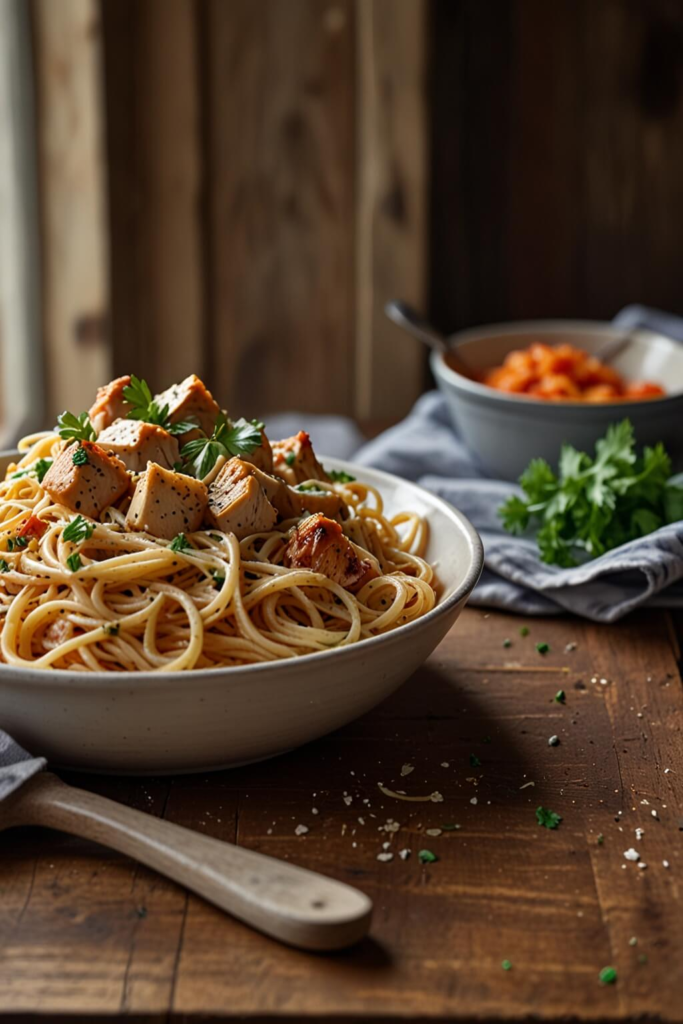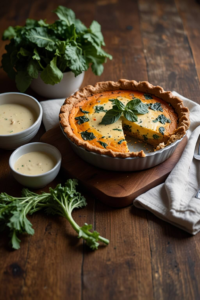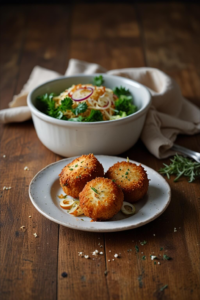Choosing the Right Chicken
Chicken Cuts
When deciding on the best cuts of chicken for a delicious spaghetti dish, both chicken breasts and thighs are excellent choices. Chicken breasts are lean, cook quickly, and provide a mild flavor that does not overpower the sauce. On the other hand, thighs offer a richer taste and more tender texture due to their higher fat content. Therefore, your choice might depend on whether you prefer a lighter dish or a more robust flavor.
Preparation Tips
To ensure your chicken is tasty and succulent, proper preparation is key. Begin by trimming any excess fat and patting the chicken dry. Season generously with salt, pepper, and Italian herbs such as oregano and basil to enhance its flavor. For an even deeper taste, marinate the chicken in olive oil and garlic for a few hours before cooking. This step isn’t just about flavor; it also helps in achieving a perfectly cooked chicken that’s juicy and aromatic.
Selecting Your Pasta
Type of Spaghetti
The choice between whole wheat, standard, and gluten-free spaghetti can significantly affect your dish. Whole wheat pasta stands out for its nutritional benefits and a slightly nuttier flavor, which pairs well with robust sauces. Standard pasta, made from refined flour, offers a classic taste and texture that many prefer. Gluten-free options are excellent for those with dietary restrictions, and many varieties made from rice or corn provide a pleasant texture and taste. Consider your dietary needs and flavor preference to choose the right type.
Cooking Tips
Cooking pasta to the perfect consistency is crucial for a good spaghetti dish. Generally, aim for “al dente” – tender but with a slight bite. Boil a large pot of salted water before adding the pasta, and stir occasionally to prevent sticking. Refer to the package for specific cooking times but testing the pasta a minute before the indicated time can ensure you achieve the perfect al dente texture. Remember to reserve some pasta water before draining, as it’s excellent for adjusting the sauce consistency later.
Preparing Additional Ingredients
Fresh vs. Canned Tomatoes
Using the right type of tomatoes can make or break your spaghetti sauce. Fresh tomatoes are wonderful during peak season; they offer a bright and tangy flavor unmatched by canned varieties. However, outside their season, canned tomatoes can be a flavorful, consistent, and convenient alternative. They are already peeled and prepped, saving you time and effort in the kitchen.
Cheese and Herbs Selection
Choosing the right type of cheese and herbs can significantly enhance the flavor of your spaghetti. Freshly grated Parmesan or Pecorino Romano adds a salty, umami-rich layer to the dish. As for herbs, incorporating fresh basil, Italian parsley, or thyme brings freshness and vibrancy, elevating the overall flavor profile. Always add herbs at the end of cooking to preserve their color and aroma.
By carefully selecting and preparing your ingredients, you set a strong foundation for a delectable chicken spaghetti recipe. Stay tuned for Part II, where we delve into cooking the dish to bring all these elements together beautifully.
Making the Sauce
To create a truly memorable chicken spaghetti, the sauce is paramount. Here’s how to ensure it’s packed with flavor:
Base Ingredients
Start by heating a generous amount of olive oil in a large pan. Add finely chopped onions and allow them to soften, becoming translucent—this usually takes about 5 minutes. Next, include minced garlic, stirring well, to infuse the oil. The key here is to cook the garlic until it’s just golden, ensuring it releases its aromatic properties without burning.
Simmering Techniques
Once the base of your sauce is fragrant, it’s time to turn your attention to the consistency and depth of flavor. Add fresh or canned tomatoes — whichever you have chosen based on your preference or the season. To enrich the sauce, let it simmer on low heat. This gradual cooking process allows flavors to meld beautifully. For a well-rounded taste, consider adding a touch of sugar to balance the acidity of the tomatoes and a pinch of salt to enhance the overall flavor profile.
Cooking the Chicken
Balancing the chicken’s flavor and texture against the robust sauce requires thoughtful preparation.
Sautéing vs. Baking
Sautéing chicken pieces in a bit of olive oil over medium-high heat can quickly sear the outside, locking in moisture and adding a delightful texture. On the other hand, baking chicken in the oven might be a better option if you’re aiming for a less hands-on approach and a uniformly tender texture. Both techniques have their merits, so choose based on your texture preference and time constraints.
Integrating Chicken into the Sauce
Incorporating the chicken into your sauce is crucial. If you’ve sautéed the chicken, add it directly to the simmering sauce, allowing the flavors to integrate. If baked, chop or shred the chicken before stirring it into your sauce. Let the combined ingredients simmer together for at least another 10 minutes to ensure that the chicken absorbs the savory tomato flavors while imparting its own juices back into the sauce.
Combining Ingredients
To bring your chicken spaghetti to life, thoughtful layering of flavors and correct assembly are key.
Layering Flavors
Herbs and spices are the soul of your dish. Add dried herbs like oregano and thyme early in the cooking process so they can simmer and release their flavors into the sauce. Fresh herbs, however, should be added towards the end of cooking to preserve their vibrant color and fresh taste. Additionally, a splash of red wine can be incorporated during the simmering process to introduce an extra layer of complexity.
Final Assembly
Lastly, the assembly of your spaghetti and sauce should be timed perfectly; cook your spaghetti al dente, drain, and if possible, finish cooking it in the sauce. This technique allows the pasta to absorb the sauce, enhancing the overall taste and keeping the pasta from becoming too dry. Stir gently to combine and coat the spaghetti evenly.
Serve hot, ensuring each plate is a harmonious blend of pasta, sauce, and succulently cooked chicken. Enjoy the culmination of your efforts, a dish rich in flavors and textures that are sure to delight any palate.
Final Touches and Serving
Garnishing and Presentation
Adding Fresh Herbs
The finishing touch to any dish is often a sprinkle of freshly chopped herbs which not only add a burst of color but also enhance the flavors. For chicken spaghetti, herbs like basil or parsley are not just garnishes; they are integral to bringing the dish to life. Chopping these herbs just before serving ensures they retain their vibrant color and aroma, invigorating the dish with freshness. A generous sprinkle over the plated spaghetti can transform the look and taste, making it more appealing and delicious.
Serving Techniques
Presentation is key in elevating the dinner experience. For chicken spaghetti, consider the twirl technique—a fork is used to swirl a serving of spaghetti onto a spoon or directly onto the plate to create a nest-like shape. This makes for an elegant heap of pasta, topped attractively with sauce and chicken. Serving the dish on a warm plate keeps the spaghetti hot, enhancing its flavors and texture. Besides that, a final drizzle of good quality olive oil just before serving can add a glossy, appetizing sheen.
Customizing the Recipe
Adjusting Spiciness
Every palate has its preference regarding the heat level in food. To customize the spiciness of chicken spaghetti, one can tweak the amount of chili flakes used, or add freshly chopped chili peppers into the sauce while cooking. For those who prefer a milder version, it’s advisable to serve the chili or hot sauce on the side, allowing each diner to control the spice level according to their taste.
Vegetarian Adaptations
To cater to vegetarians, substituting chicken with plant-based alternatives like cooked lentils, mushrooms, or tofu can be an excellent way to adapt the recipe. These ingredients not only mimic the texture but also absorb the flavors of the sauce well. Make sure to sauté these substitutes in plenty of herbs and spices to enrich their taste before integrating them into the spaghetti.
Pairing and Side Dishes
Wine Pairing
Selecting the right wine to complement chicken spaghetti can greatly enhance the dining experience. A light to medium-bodied red wine, such as a Pinot Noir or a Chianti, pairs splendidly with the tomato-based sauce and the savory chicken, balancing the richness of the dish with acidity and offering a fruit-forward refreshment to the palate.
Appropriate Side Dishes
When it comes to side dishes, simplicity is key so as not to overshadow the main. A side salad dressed with a simple vinaigrette or steamed vegetables sprinkled with herbs makes for a wholesome, balanced meal. For a heartier complement, consider garlic bread or a small serving of risotto to make the meal more substantial.
In conclusion, giving these final touches and carefully pairing the chicken spaghetti with suitable sides and wine ensures a delightful meal that appeals to all senses. Remember, the beauty of any dish lies not only in its taste but also in how it’s served; therefore, a little extra effort in presentation goes a long way in crafting an unforgettable dining experience.




